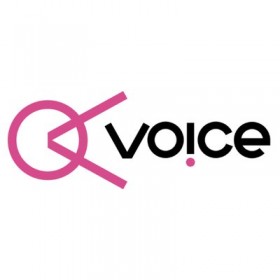It was just over a year ago, around June 2020 that I was sitting in my living room at home, surrounded by a silence that I had forcefully and intentionally created through switching off my television (and launching the remote control to the other side of the sofa). I reflected on my own hurt feelings for a moment, before my thoughts turned to the young people that I teach. Just like me, they had no doubt been subjected to the same sad and destructive media coverage; the continual onslaught of scenes displaying black trauma, death and suffering communities. I wondered how they might be processing all of the violence and devastation. I wondered if they had the tools to understand what was going on.
Like many others, I had spent the past few weeks working from home and enduring news report after news report highlighting the unlawful killing of George Floyd, Breonna Taylor, police brutality, protests, and historical statues of men that I’d never even heard of being torn to the ground by angry members of the public. We were in the throes of our first ever national lockdown, as a result of a pandemic. We were also experiencing a wave of a kind of sickness that has evolved in our minds, in our families and in our communities for centuries. Racism.
I wanted to reach out to my students and colleagues. I wanted them to know that although we could not be face-to-face at that difficult time, that our voices and opinions could still be harnessed in a way that paves a journey for positivity and opportunities for learning, understanding and essentially for moving forward.
I arranged an online conversation about the benefits of decolonising the curriculum and presented this dialogue, with the support of other teachers, to schools in and around the East London area. It was the very beginning of a discussion that led to further investigation into what we do as a school to allow every child to be seen in their education.
While this conversation was taking place, students aged 11-18 responded to a school survey about racism and anti-racism in school. Some of the results were astonishing and led me to question how well-equipped we are as teachers in our ability to foster conversations about race inequality and activism with our classrooms. What training have we received that has given us the confidence to educate young people about the legacy of the UK’s colonialist past within the context of our existing curricular areas? What opportunities have we been provided with to develop our knowledge of cultural intelligence, and the understanding of the contributions of the rich and diverse cultures in our society? Which safe spaces have been provided for us to discuss our own experiences of prejudice and discrimination within the education system regarding the 9 protected characteristics?
"I knew that I had to act"
I gained qualified teacher status in 2012. The eight national teacher standards are rigorously evidenced in every teachers’ training year, and also in their induction year. I have been evidencing my commitment to the eight teacher standards in every single lesson that I have taught ever since.
Nearly a decade later, in 2020, I look back at these standards and see that there are gaps. Huge, gargantuan potholes that are leaving teachers and education leaders stumbling in the dark, afraid, apprehensive, ill-equipped and without the essential training that is necessary in order to nurture a generation of young people who must be capable of not just ‘tolerating the differences in others’ (section 2 Teacher Standards 2012), but to embrace and accept them.
I started a petition to call on education ministers to make an amendment to teaching standard 5 which would see all protected characteristics being taken into consideration when ensuring that students' needs are being met in the classroom. If this change can be made, education providers will have to ensure that equality training for new teachers is a mandatory process and will therefore open the door for further work and assessment to take place once an individual has gained teacher status. Click here to read and sign the petition.
Amid all of the advocacy that I had embarked upon in my role of the equality and wellbeing lead, I knew that I had to act upon the results of the school survey that had taken place. In the early months of 2021 we found ourselves in a third national lockdown, which meant that for a second time, school was closed for the majority of students (only being open for those who are vulnerable or the children of key workers). I presented the survey results to students and asked if anyone would like the opportunity to form a group to discuss how we as a school can raise awareness of racism and anti-racism. Over 20 students from years 7-11 decided that they wanted to participate.
As soon as the school gates re-opened in early March, we got to work, and the first issue of ECS Empower magazine was born. If you take the time to read through the pages of this student magazine, you will see that this is a piece of work that has not only managed to harness student voice, but it has been a way for students to express the deep levels of pain and frustration that they are currently witnessing and experiencing in themselves and in their peers. The equality work that is being produced across Eastbury Community School is born from teachers that have taken it upon themselves to go the extra mile for the students that we teach. It is born of a willingness and dedication to make meaningful changes to the way our society is shaped, and it is also a way of encouraging a healing process within our school and the community that it serves. Students are calling for action. It is, therefore, our duty to respond accordingly. The elephant in the classroom can no longer be avoided, looked over, or used to tick a box. The elephant must become part of the classroom, and part of the school culture in its entirety.
You won’t find an equality lead teacher/advisor in every school in the country. I have been lucky enough to have been afforded the space to carry out and champion equality work, and for this effort to be recognised as a designated teaching and learning responsibility. I am the first in the school’s history to have taken up this role officially as a middle leading teacher, and it is my mission to support as many teachers, education leaders, and schools as possible to provide spaces for staff and students to create the kind of organisations that engage frequently on matters of diversity, equality and equity. This engagement must be embedded into the values of the organisation and should be adhered to and addressed by all stakeholders, at all levels, and with measurable outcomes and regular reviewing procedures.
Starting the conversation in your school
If you are a teacher or a leader in a school in the UK and you would like to begin equality work within your institution, I have detailed below a cycle that you can work through to begin your journey.
Form a team.
It is important that you don’t feel alone in trying to engage your colleagues and students in equality work. A diverse support network of staff will provide you with a sounding board for your ideas. It is beneficial for you (if you are not already a member of your senior leadership or management team) to have someone from the top support you by joining the group and playing an active role. This will help the ideas and plans that generate from the group to be communicated widely amongst the staff body.
Identify ways to measure and record your impact.
There are several ways that you can measure the impact of the work that you plan to carry out. Staff and students’ surveys are a great way to gauge feelings initially, and then progress is measured again at the end of the cycle. The data that you collect will inform future planning and interventions and will help to keep your goals focused on the immediate needs of those you are working with. You will want to gather information on tangible areas like curriculum development, wellbeing and happiness of staff and students, and ways to impact teaching and learning.
Workshops, focus groups and activities that can be completed by the whole school through CPD sessions (for staff) and pastoral time (for students) are a good vehicle for discussion and group work. Feedback can be taken after each session so that you are knowledgeable about what worked well and what could be tweaked for next time. Visual work for displays can also be generated during these moments where large groups are collaborating on shared projects for the school to showcase in its common areas.
Decide.
Once you have agreed on your measurement strategies (above) you can then decide on a plan that is tailored to your organisation. When creating this, think of the big picture and what you would like your end goals to be. What would you like staff and students to think about? What is it that you would like staff and students to learn from each other? What kind of conversations would you like to ignite? Who do you have in your community that could come in and deliver some training perhaps? What is happening nationally/internationally in the months to come that could provide you with an opportunity to start a conversation? It is at this stage that you can begin to work on a mission statement. Be mindful of the fact that equality work is extensive. Be prepared to curate a plan that spans at least 3 years. There are no shortcuts that can be taken, and there will always be areas to revisit and rehash. The most important thing for you and your group to know is that the work has begun. It is also important to note that with any equality work you’re planning to do, you must also consider the duty of care that you have for your staff and students’ feelings. Being asked to share and reflect on issues that may be very personal to individuals/groups experiences should come with a level of caution and due diligence.
Act
Harnessing student and staff voice is essentially what you are aiming to achieve in carrying out the plans that you have made. Creating safe spaces in a variety of areas and inspiring a culture of change and acceptance may not happen overnight, but the more you engage with your colleagues and your students on this level, the easier it will get, and the momentum will grow as a result. Activities and workshops can take the form of books clubs where the reading is specifically aimed at issues concerning the nine protected characteristics, work with your heads of year/phase leaders to introduce form time and pastoral activities that correspond with appropriate calendar events like Black History Month 365, School’s diversity week, Pride and International Women’s Day etc. You can seek external support from organisations for training and CPD opportunities, and you can of course start your own student/ staff voice magazine.
Evaluate
Towards the end of the academic year, you will want to look back on the work that you and your team have achieved, and you will want to know how staff and students are feeling now in comparison to how they felt at the beginning, and the knowledge that they have acquired. Now is the perfect time to send out the surveys again and collect the data that you need to identify how to move forward in this continuous cycle of learning, celebrating, and raising awareness. It is with this data and evidence of progression that you can confidently present your work to parents, governors, and stakeholders. At this stage in your equality work, you can return to step number one. Invite more staff to join your working party, encourage more students to form their groups and clubs and continue with the cycle. Share your work with the wider community and spread the word. The most important aspect of your work is the strength behind the team that you work with and the shared commitment and goals that you use to drive this work deeper and deeper into the heart of your organisations and your community.
Claudia McIntosh is a secondary school teacher, working to promote equality and wellbeing within her 3-19 state school in East London. She supported the pupils to create ECS Empower, and you can read more about the magazine here.









0 Comments